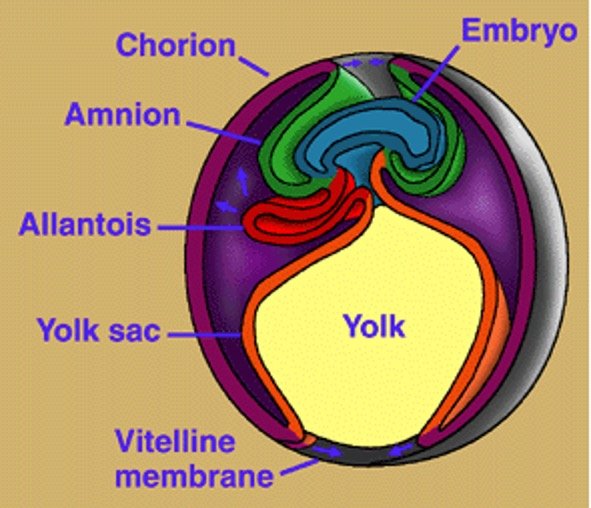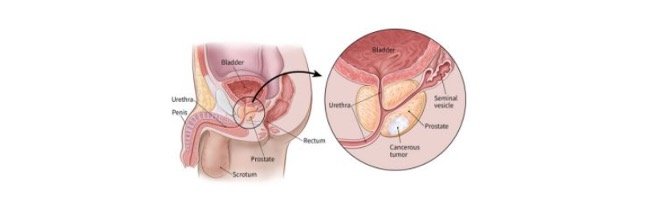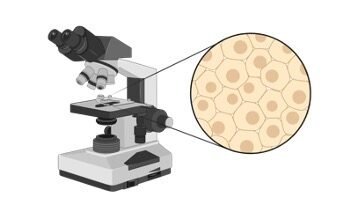Amniotes Definition
The vertebrates which have a fetal tissue known as the amnion are called amniotes. A membrane that surrounds the fetus and is derived from the fetal tissue is called the amnion. It protects the fetus and can be found within the egg, or can simply enclose the fetus. For instance, lizards and birds, it found within the egg or enclose the fetus within the uterus.
Amniotes Description
Most of the vertebrates, excluding fish and amphibians are amniotes. Amphibians and fishes are known as amniotes, which means “without an amnion”. The species often lay their eggs in water to protect them from any damage.

Image Credit: https://www2.gwu.edu/
Most amniotes are terrestrial animals thus they have to protect their fetus under the weight of gravity. The amnion protects the developing fetus. Whales are the only exceptions of amniotes because they are aquatic animals.
It may be due to the development of amnion in whales before their move to the sea. Some marine turtles also live in the sea but return to land to lay their eggs.
Characteristic of Amniotes
The fetus of amniotes is surrounded by three membranes, which are the amnion, the top chorion layer, and the waste-absorbing allantois. In general, the amniotes share several characteristics such as they all are developed from a common ancestor and the ancestor has developed the amnion character.
Most of the egg-laying species consist of the amnion. For example, the birds and reptiles, and some mammals consist of this protective layer. However, the shell is not present in the human egg but in many ways, the development of the human egg is similar to the chicken eggs.
Animals Considered Amniotes
Sauropsid Amniotes
Amniotes are divided into two divisions, the sauropsid amniotes, and the synapsid amniotes. The reptiles and birds are included in the sauropsid amniotes. Formally, many different groups are included in this group, but they are separated from the synapsids because they share many derived characteristics.
However, both the groups are evolved around the same time from a common ancestor. The ancestor was likely not terrestrial. After the evolution of both sauropsids and synapsids, both had to make some adaptations to sustain themselves in terrestrial environments.
The heart, lungs, and kidneys reflect the differences mainly. The lungs of synapsids differ from the lungs of sauropsids that have foveolar lungs. The small chambers present in foveolar lungs open to a common space.
The heart of sauropsids lacks the ventricle and some sauropsids have almost 4 chambered hearts. The process for waste excretion is also different in the sauropsid amniotes than the synapsids.
Sauropsids excrete uric acid. Much of the water can be absorbed in the cloaca in which the substance precipitates out of the urine. Thus, uric acid become a more water-efficient way of excreting nitrogenous wastes than the synapsid method. The turtles, lizards, crocodiles, and birds, which lay eggs are included in sauropsids.
Synapsid amniotes
The sauropsids are separated from the synapsid amniotes since millions of years ago, but they have slight differences. They excrete all urea as nitrogenous waste. Urea is concentrated in the synapsid kidney and excreted with a small amount of water.
The strategy is much more efficient than the excretion of straight ammonia but it is not water-efficient as uric acid. Ammonia is usually excreted by fish and amphibians. Synapsids consist of 4 chambered hearts, which have a partition between ventricles.
Thus, the efficiency of oxygenating the blood is improved due to separate paths for blood. The structure of the lungs is also different in synapsids than the sauropsids. They consist of an alveolar lung which has many branches of the trachea instead of small pockets from a central chamber.
The branches end at an alveolar sac. Synapsids consist of only three extant groups, all of them are mammals. However, the amniotic sacs are present in all of these amniotes but they reproduce by different methods.
For instance, the monotremes lay eggs in nests and after the eggs hatch, they feed them milk like other mammals. The marsupials are considered as a median between the monotremes and the placental mammals.
In the marsupials, the young are developed in the uterus but born at a very early age. They must climb along with the mother into the marsupial pouch, where the mother feeds them milk for their proper development.
The rest of the synapsid amniotes are represented by the placental mammals. In these animals, a placenta or oxygen and nutrients passing maternal membrane are used to feed the offspring within the womb.
They produce the largest offspring among all amniotes but they have fewer offspring compared to sauropsid amniotes.
Evolution of Amniotes
The evolution of amniotes may occur when first terrestrial animals are venturing onto land. The two main groups of amniotes were divided due to the much different terrestrial environment.
The division may occur around 400 million years ago, in the Devonian period. Later, various considerable differences have evolved between these groups. As discussed above, they differ in their anatomy and physiology.
At the time, they also diversified due to the new terrestrial environment which provided them several new niches for the animals to fill. An organism named parieasaur, a cow-sized organism could have been a common ancestor of modern amniotes.
It is a large reptile-looking organism from the Devonian period that may have primitive hearts, lungs, and kidneys and likely had an amnion. Thus it is likely one of the first amniotes.
Amniotes Citations
Amniotes: https://www2.gwu.edu/~darwin/BiSc151/Reptiles/Reptiles.html
Share












